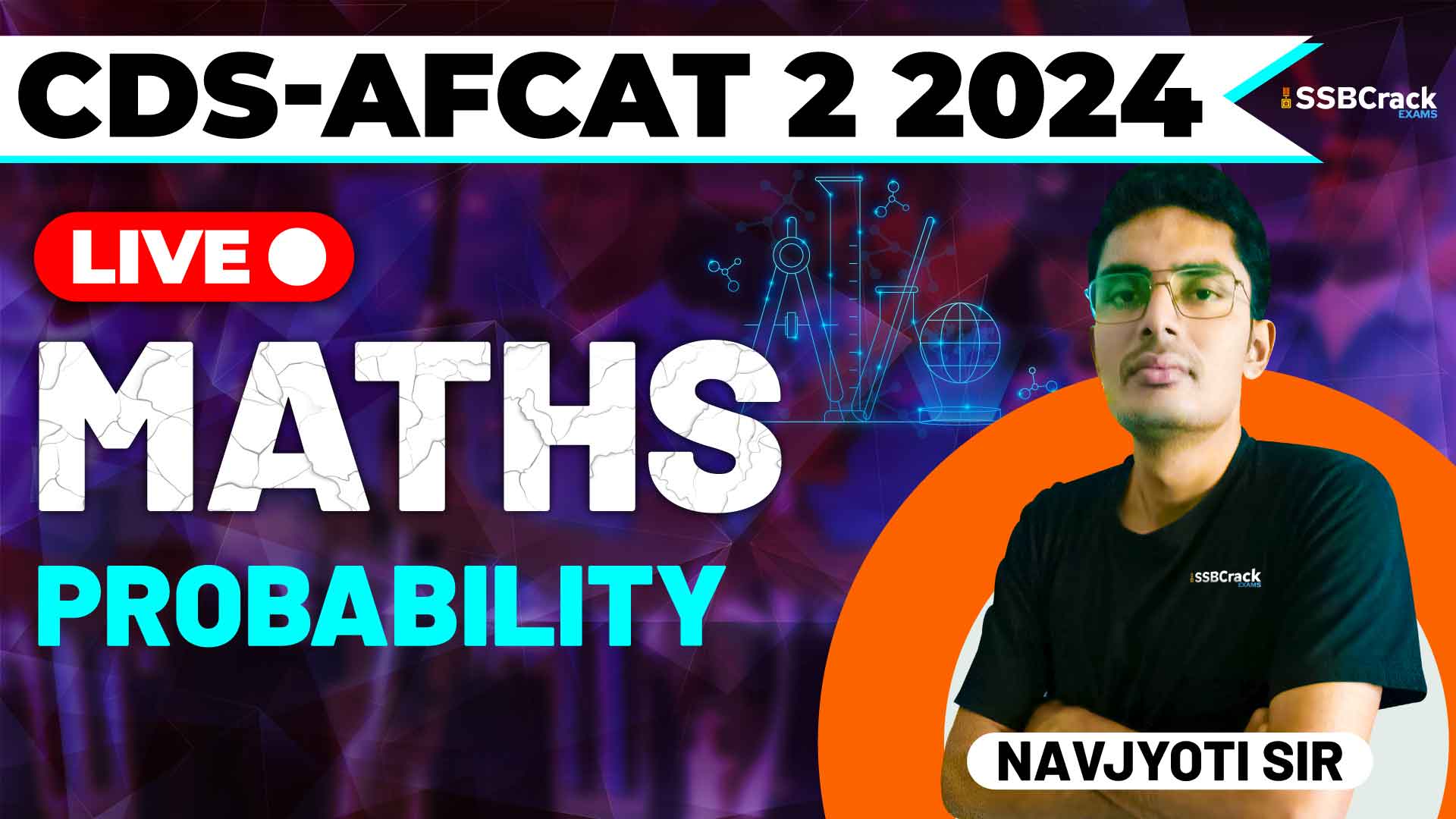Probability is a cornerstone topic in the mathematics sections of competitive exams like the Combined Defence Services (CDS) and Air Force Common Admission Test (AFCAT). A recent class dedicated to this topic provided a comprehensive overview, focusing on critical concepts and extensive practice with multiple-choice questions (MCQs). This article will highlight the main concepts covered, the importance of understanding these topics, and effective strategies for solving MCQs.
Importance of Probability in Competitive Exams
Probability is not just a topic in mathematics; it is a fundamental skill that helps in decision-making and risk assessment. In competitive exams, questions on probability test a candidate’s ability to handle uncertain situations mathematically, making it an essential area to master.
Key Concepts in Probability
The class covered several essential topics in probability, providing students with a thorough understanding and practical application through MCQs. These topics included random experiments, sample spaces, defining probability, and problems involving coins, cards, and dice.
Random Experiment
A random experiment is any process or action that results in one of several possible outcomes. The key feature of a random experiment is that the outcome is uncertain and cannot be predicted with certainty. Understanding random experiments is the first step in studying probability.
Sample Space
The sample space is the set of all possible outcomes of a random experiment. For instance, when tossing a coin, the sample space is {Heads, Tails}. When rolling a die, the sample space is {1, 2, 3, 4, 5, 6}. Identifying the sample space is crucial for calculating probabilities because it lays the groundwork for determining the likelihood of various events.
Defining Probability
Probability quantifies the likelihood of an event occurring and is defined as the ratio of the number of favorable outcomes to the total number of possible outcomes in the sample space. Probability values range from 0 (impossible event) to 1 (certain event). Understanding how to define and calculate probability is essential for solving probability problems.
Practical Applications: Coins, Cards, and Dice Problems
The class focused on specific types of probability problems involving coins, cards, and dice, as these are common in competitive exams and provide a practical application of probability concepts.
Coin Problems
Coin problems typically involve calculating the probability of certain outcomes when one or more coins are tossed. These problems help illustrate the basic principles of probability in a straightforward context.
Example MCQ:
Question: What is the probability of getting two heads when two coins are tossed?
Solution: The sample space is {HH, HT, TH, TT}. The favorable outcome is {HH}. So, the probability is 1 out of 4, or 1/4.
Card Problems
Card problems involve calculating probabilities with a standard deck of 52 cards, which is divided into four suits of 13 cards each.
Example MCQ:
Question: What is the probability of drawing an Ace from a standard deck of 52 cards?
Solution: There are 4 Aces in the deck. So, the probability is 4 out of 52, or 1/13.
Dice Problems
Dice problems involve calculating probabilities when one or more dice are rolled. Each die has six faces, numbered from 1 to 6. These problems help in understanding the uniform distribution of outcomes.
Example MCQ:
Question: What is the probability of rolling a sum of 7 with two dice?
Solution: The possible pairs that sum to 7 are (1, 6), (2, 5), (3, 4), (4, 3), (5, 2), and (6, 1). There are 6 favorable outcomes out of a total of 36 possible outcomes. So, the probability is 6 out of 36, or 1/6.
Discussion and Practice of MCQs
The class placed a strong emphasis on solving MCQs to reinforce the concepts discussed. Practicing MCQs helps students apply theoretical knowledge to practical problems, enhancing their problem-solving skills and exam readiness.
Example MCQ:
Question: A box contains 5 red balls, 7 blue balls, and 3 green balls. If a ball is drawn at random, what is the probability that it is neither red nor green?
Solution: The total number of balls is 15. The number of blue balls is 7. So, the probability of drawing a blue ball (neither red nor green) is 7 out of 15, or 7/15.
Strategies for Solving Probability MCQs
Here are some strategies for effectively solving MCQs on probability:
- Understand the Question: Carefully read the question to understand what is being asked. Identify key information and the required outcome.
- Identify the Sample Space: Determine the total number of possible outcomes (sample space) for the experiment.
- Determine Favorable Outcomes: Identify the number of favorable outcomes that correspond to the event in question.
- Calculate the Probability: Use the definition of probability to calculate the ratio of favorable outcomes to the total number of outcomes.
- Review and Verify: Double-check your calculations and ensure that your reasoning is sound.
Conclusion
Mastering probability is crucial for success in the CDS and AFCAT exams. The recent class provided a comprehensive overview of essential probability concepts, including random experiments, sample spaces, defining probability, and solving problems involving coins, cards, and dice. Through extensive practice with MCQs, students gained valuable experience in applying these concepts to solve practical problems.
By consistently practicing MCQs and developing a strong understanding of probability principles, students can enhance their problem-solving skills and increase their chances of success in competitive exams. The strategies discussed in the class and highlighted in this article provide a solid foundation for tackling probability questions with confidence and precision.



















